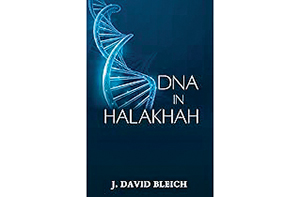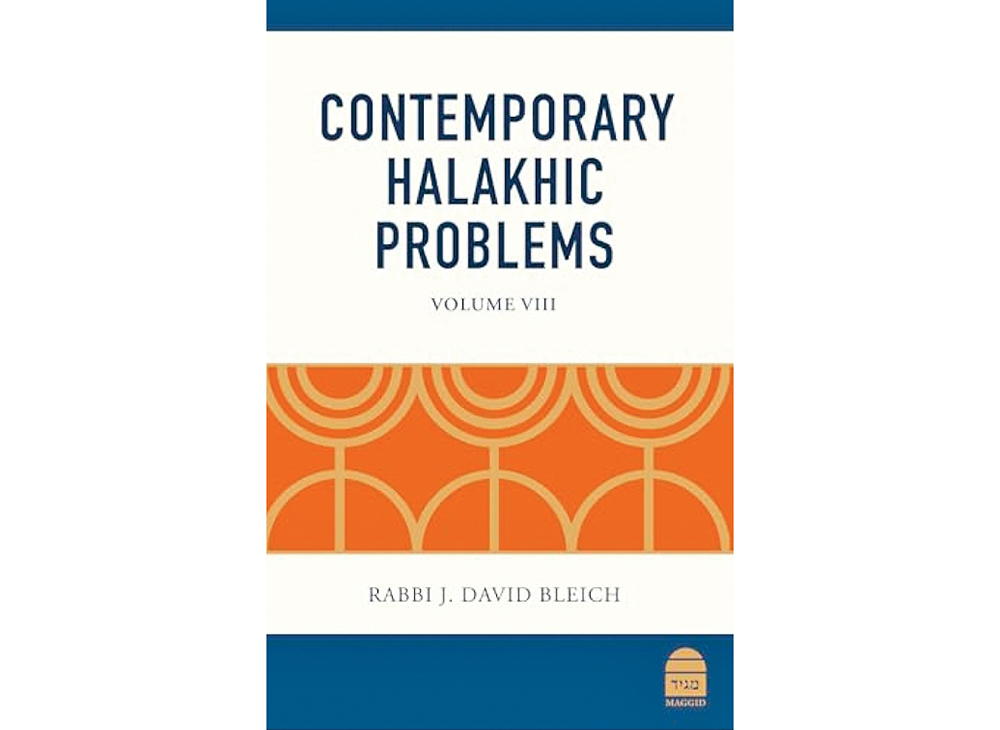
Highlighting: “Contemporary Halakhic Problems: Volume VIII” by Rabbi J. David Bleich. Maggid. 2024. 648 pages. ISBN-10: 1592646565.
Highlighting: “DNA in Halakhah” by Rabbi J. David Bleich. KTAV Publishing House. 2021. 296 pages. ISBN-10: 1602804435.
Rabbi Ezra Schwartz, rosh yeshiva at Yeshiva University, often quotes Rabbi J. David Bleich with the preface, “He knows everything.” When you read Rabbi Bleich’s works, it becomes eminently clear that Schwartz was not exaggerating in the least.
Kohelet Rabbah states: “A thousand enter to study Torah, and one emerges to rule in halacha.” Permit me to explain it this way: Of the thousand people qualified to rule in Halacha, but one will emerge with complete and utter mastery. In this case, the master is Rav Bleich.
Don’t take my word for it. In “Contemporary Halakhic Problems: Volume VIII” (Maggid Books), Rav Bleich displays the once-in-a-generation genius of someone who has not just mastered all of Torah and Halacha but understands them as an integrated unit, with a total and complete understanding of the topics and their implications.
In this volume, Rav Bleich discusses not only theory, but also very real modern-day issues. He deals with topics such as autonomous automobiles, various issues related to the Coronavirus, the disposition of fertilized ova and more.
The book opens with a chapter on “The Principles and Methodology of Jewish Law.” In this tour de force of a chapter, he examines the methodology of psak. Of the many different types of psak, there is one he interestingly terms prophylactic psak. This is where, instead of actually resolving a halachic problem, one avoids it entirely.
While he does not discuss the topic, one example of prophylactic psak might be when Purim recently fell on a Friday. That situation introduced numerous technical issues about when to eat the Purim meal. One possible solution was the notion of pores mapa umikadeish. This is when one starts their Purim meal before sunset and then stops eating by sunset. They will then bring lechem mishne to the table, place a cover over it, go to the synagogue, return and make Kiddush, and continue eating.
Many authorities shy away from pores mapa umikadeish given the myriad issues involved. However, rather than dealing with the issue head-on and using it as a learning experience, they will suggest not using that approach.
Tobacco use remains the leading cause of preventable disease and death in the United States and continues to be the cause of 20% of all deaths. Vaping is no less life-threatening than cigarette smoking and is particularly dangerous to adolescents, who are often the target audience of the vaping manufacturers.
Yet when presented with such sobering statistics regarding tobacco use, a common refrain from smokers is that while long-term smoking is dangerous, it’s impossible to say that the puff they are taking now is inherently life-threatening. Therefore, they naively hold that there is no halachic prohibition on smoking.
Rav Bleich throws the smoker’s unsophisticated logic out the window. He compellingly writes that in the aggregate, the entire series of acts of smoking constitutes a single pesik reisha, just as a cumulative number of intended non-lethal acts are tantamount to a single lethal act.

The example he gives is that of a person intending to commit homicide by administering arsenic in cumulative doses. That person cannot offer a defense that none of their acts was performed with the intent to produce a lethal result because he has made it clear in advance that he will continue to perform such acts until they have achieved their desired goal.
While most topics are dealt with in a single article, DNA and halacha are so significant and novel that they require their own book. In “DNA in Halakhah” (Ktav Publishing), Rav Bleich deals with aspects of evidence that were not known to the rabbis of the Talmud.
Technologies such as fingerprints, blood typing, DNA identification and more can significantly affect Halacha. Yet how can one apply those technologies to a halachic system that is unaware of them?
Regarding Halacha, these technologies can potentially be used in cases such as resolving agunot, determining the status of a mamzer, and other areas such as inheritance and whether there is such a thing as a Jewish gene.
This book further demonstratesRav Bleich’s ability to tackle the most complex topics, thoroughly analyze them and then harness his mastery of Talmud and Jewish law to reach a conclusion.
When it comes to DNA, Rav Bleich concludes that DNA analysis is firmly established as a medical tool and is invaluable in the study of hereditary diseases. However, DNA analysis has limited halachic import, particularly in resolving agunah problems.
He concludes that the unique nature of the so-called Jewish gene can, at best, establish a rov (majority) and be dispositive in situations in which rov constitutes acceptable proof. But as to the kohen gene, he says it remains little more than a curiosity.
Rav Bleich’s genius and approach to psak are in an entirely different league—one in which he has very few peers. These two books are the latest in Rav Bleich’s seemingly endless contributions to modern halacha.
Two hallmarks of Rav Bleich’s scholarship are his uncompromising intellectual honesty and his sophisticated academic approach. In both of these amazing works, his approach is manifest on every page.
Ben Rothke lives in New Jersey and works in the information security field. He reviews books on religion, technology, philosophy, and science. Follow him on Twitter at @benrothke.










